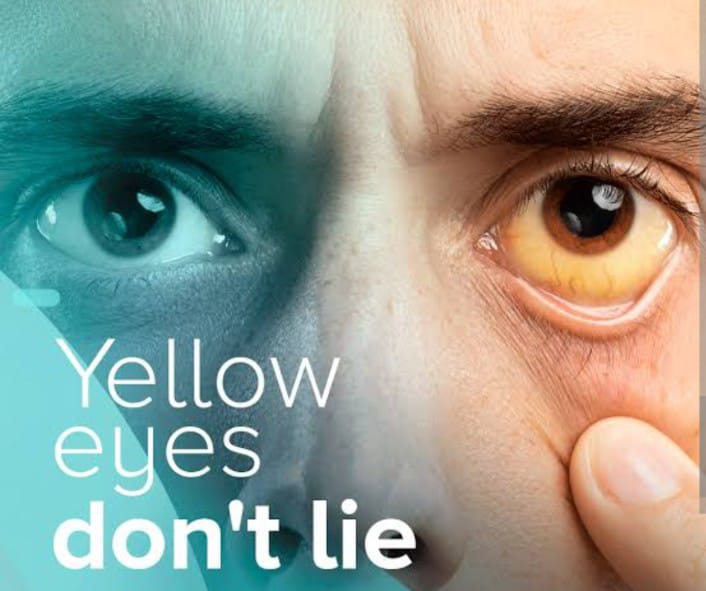
2024-04-01T15:07:52
Jaundice is a medical condition characterized by the yellowing of the skin, sclera (white part of the eyes), and mucous membranes due to elevated levels of bilirubin in the bloodstream. In this video, we will explore the causes, symptoms, and significance of yellowing eyes in jaundice. What is Jaundice? Jaundice occurs when there is an excessive accumulation of bilirubin, a yellow pigment produced during the breakdown of red blood cells, in the body. Bilirubin is typically processed by the liver and excreted in bile. However, when the liver is unable to metabolize bilirubin efficiently or when there is an obstruction in the bile ducts, it leads to jaundice. Causes of Jaundice: Hepatitis: Inflammation of the liver due to viral infection (hepatitis A, B, C), alcohol abuse, or autoimmune disorders. Liver Cirrhosis: Scarring of the liver tissue caused by chronic liver disease, leading to impaired liver function. Bile Duct Obstruction: Blockage in the bile ducts due to gallstones, tumors, or inflammation, preventing bilirubin from being excreted. Hemolytic Anemia: Accelerated breakdown of red blood cells, resulting in increased bilirubin production. Gilbert's Syndrome: A genetic condition causing mild elevation of bilirubin levels without any liver damage or other symptoms. Medications and Toxins: Certain drugs, chemicals, and toxins can interfere with liver function and bile excretion, leading to jaundice. Symptoms of Jaundice: Yellowing of the skin, sclera (white part of the eyes), and mucous membranes Dark urine Pale stools Fatigue Abdominal pain and swelling Nausea and vomiting Itchy skin Fever and chills (in cases of hepatitis) People mostly ask for most searches on #top5hospitalinnagpur #besthospitalnearme #tophospitalindighori #besthospitalinsakkardara #tophospitalinkharbi #besthospitalinumredroad #bestmultispecialityhospitalinnagpur

